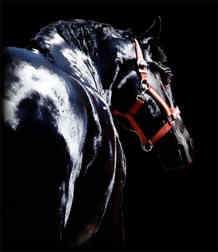
As well as the research there is a lot we can do to provide a better future for horses. People like Monty Roberts with his vision are growing in influence and eventually people will see that there are different ways of treating, managing, starting and housing horses. Horses kept in pasture have less problems and it is considered a more humane treatment, particularly those who do not adapt well to confinement (Houpt 1981).
There are other aspects of animal use and welfare that have been in the public eye including animal testing, animal transportation, battery hens and veal crates that are deemed not acceptable today. The jury is still out on issues like hunting and whips in racing but it is the authors opinion that in the future we will look back on the use of the whip and think of it as we do other forms of animal abuse. Currently there is a controversy about Premarinâ , the farms where mares that are in foal are kept in tie stalls for the collection of their urine to produce oestrogens for hormone replacement therapy for humans. This is felt to be cruel by many animal rights activists.
For the people thinking, "OK, stables are bad for the horse, but what are the alternatives?" then here are a few more ideas. Start in studs and with weaning, as half of stereotypies start just after weaning (Kiley-Worthington 1991). Keep foals and mothers together for as long as possible. Let stallions run with mares; as mentioned before, if horses are used to it then injuries are low. Provide shelter in field from bad weather, enough food to eat and opportunity to get out of wind and rain if they want it. If the horse wears a rug, make sure it fits.
There is always a place for more education and research. There needs to be a break from tradition. We must not do what traditional practices dictates. There have been little changes in the design of equine housing and little research in making equine environments better.